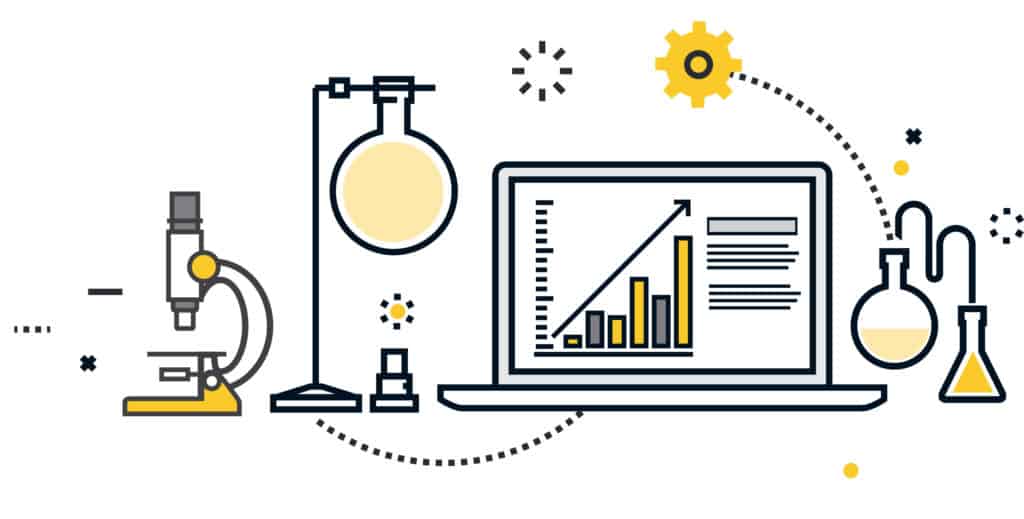
I’m one of those unicorns in the working world that doesn’t drink coffee, but there’s an element of personalisation to the purchasing process that hasn’t gone unnoticed to me. Most of you will probably visit the same coffee shop every day (maybe even multiple times a day). Why?
Because the barista knows you, and you know them, and they know what coffee you want. Furthermore, baristas get to know their regulars on a very personal level, which means that for many people they’re not just buying a coffee but also feeding their desire for personal interaction.
And this is exactly why smart companies are investing in customer behaviour research in the digital space.
As humans, we prioritise relationships and connection over most things. So for companies to fulfil this need, they need behavioural insights in order to provide a tailored experience for consumers. For a long time this level of customer understanding was difficult to achieve, but offering the same level of personalisation online as you receive when buying your morning coffee is no longer a far-fetched concept.
Use past behaviour to anticipate what your customers will want in the future. Then deliver it.
I’ve heard some impossibly convoluted orders being placed at our local coffee shop; orders that border on rocket science. And yet, every morning the barista sees these customers stand in line, and already they have every little detail of how they like their coffee prepped and ready to go. You should be offering the same experience through your website.
There’s so much customer information out there, just waiting to be collected and analysed. It’s now possible to build a larger, more detailed range of customer personas, including specific details like:
- Where they’re from
- What channels they used to get to your website
- How many times they visited
- Which products they looked at
- Which competitors they compared you to
- How many products they purchased
- How often they purchase
Most of these questions are UX research 101 these days. And yet most companies we speak to haven’t taken the time to understand the behaviour of visitors to their website – mostly because they don’t have the resources to wade through that much information.
One thing to keep in mind, however, is that those who are able to mine this data and apply the insights to their digital strategy are the ones who delight their customers the most. They also dominate their competition.
We recommend using that data to create automated email marketing sequences, to develop a content strategy, to build more granular remarketing lists and geotargeted search campaigns – just to name a few. And for those of you in the ecommerce space, don’t forget about shopping cart abandonment!
Use what you already know to ask deeper, more meaningful questions.
I’ve overhead baristas asking customers about the holiday they just returned from, if their kids have recovered from the flu, or even the details of the date they went on last night. The reason they’re able to ask these questions is because they’ve already built a pre-existing knowledge base that allows them to dig deeper and get personal.
UX research should follow the same principle. Once you get the answer to one question, ask 2-3 more questions that allow you to understand your customer even more intimately.
The recurring problem 99% of businesses face is data paralysis. Collecting data is actually the easy part. Sifting through it to find trends and meaningful insights is the most common stumbling block.
“Now that we have the data, what do we do with it? Where do we even begin?”
The questions I listed above only scratch the surface. That’s not to say they’re unnecessary – they definitely serve a vital purpose – but as a pathway to more effective questions:
- What do they think of your company? Your product? Your service?
- Why did they pick you over your competitors? Will they continue to do so?
- Could your content be better written? Better presented? Better structured?
- Did you provide them with enough information? Or too much information?
- What were their friction points? How can you make the purchase process easier for them?
- What was their user experience like? Is there a smooth transition between the online and offline experience?
- What are their major pain points? Have you addressed them effectively?
The answers to these questions will give you a more meaningful understanding of your customers and their needs. Your job now is to do something about it. Execution is critical.
We recommend tactics like A/B testing new page layouts and designs, working on your website’s path-to-purchase, improving website content and streamlining the fulfilment process.
Always say thank you and reward loyalty.
People don’t just spill the beans for anyone. Traditionally, they’re opening up to you because:
- They like you
- They care about you
- They had a terrible experience and want you (and everyone else) to know about it
Regardless of their reason, be sure to thank them for their candidness and feedback. They are, after all, taking the time to help you improve your processes – regardless of how much profanity they used to get their point across.
Conclusion
Data is, in its most distilled form, the voice of your customers. It is their opinion – not yours – that should be dictating your marketing strategy, which is why it’s so critical to invest resources into UX research. The kind of qualitative and quantitative insights it provides has the power to influence an organisation’s marketing strategy from the ground up by allowing for more data-driven decision-making.
Spending the time getting to know your customers’ behaviour online is a sure-fire investment into your company’s future success in the digital space.